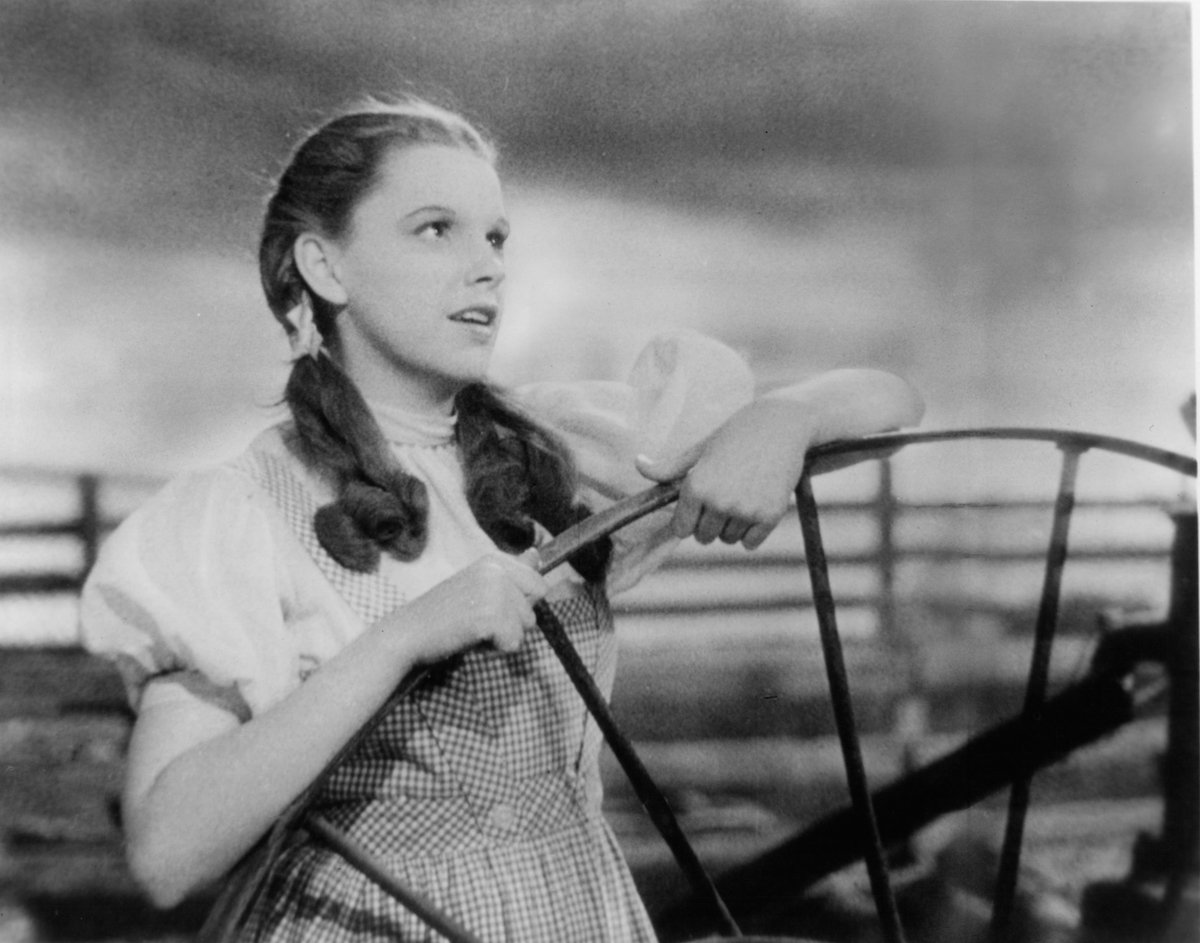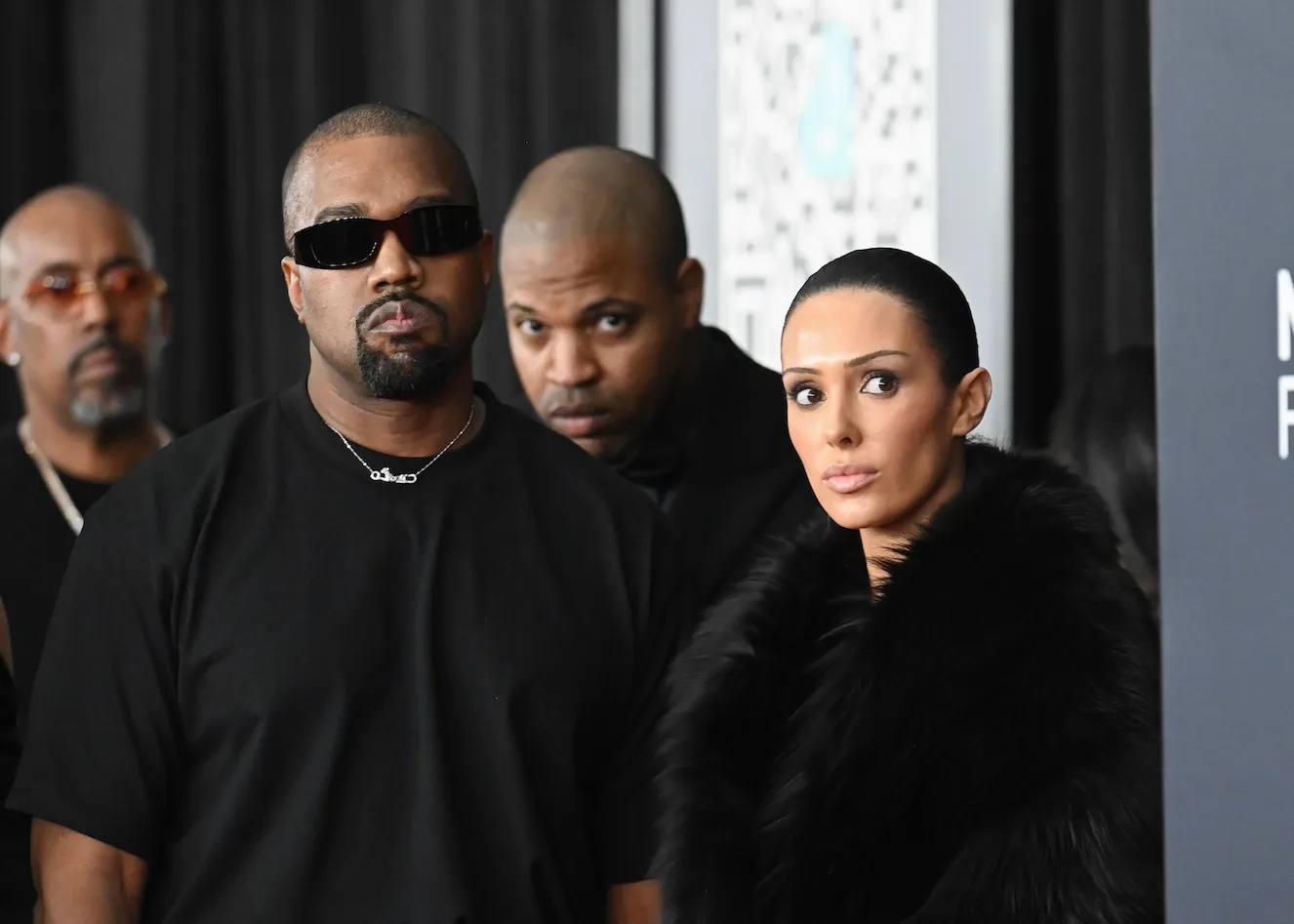‘The Wizard of Oz’: How Production Made the Twister that Dropped Judy Garland in Oz
The Wizard of Oz is legendary for the lengths it took to make the classic film we see today. It was known for being one of the first films to be shot in technicolor. When the Tin Man cries, what you see is chocolate syrup. Asbestos was used to make the snow during the poppy scene. The color-changing horse effect was created by using powdered Jello.
When watching a classic movie, it’s easy to forget that all of the special effects were made without CGI or digital enhancements. Everything you see on your screen is was created practically by an artisan. Through that process, some of the most creative solutions and effects have been captured on camera.
The Wizard of Oz’s most iconic effect took a little more time to create and execute than one would expect.

The ‘Wizard of Oz’ effects team couldn’t just film a tornado
The most logical way to film a tornado might be to fly to Kansas and wait for nature to strike. However, Arnold Gillespie, the film’s special effects coordinator, didn’t have the time to fly to a location and film a twister.
Instead, he tried a few methods to get the ‘twister’ effect. The Wichita Eagle asked John Fricke, a film historian, about a few of those methods. “They tried a test first with a water vortex, and talked about rubber,” he said.
The 35-foot tall rubber cone would be too rigid to move like a proper tornado. Instead of flying anywhere to film a natural disaster, Gillespie took a very different idea from the airport.
The iconic Kanas twister was made from a giant sock
Jon Nese of Penn State’s Department of Meteorology created a video obtained by the Washington Post, explaining what the special effects coordinator did in detail.
“Gillespie recalled that windsocks the ones that hung at airports, resembled a classic tornado funnel shape. He decided to make a tornado out of plain, woven, muslin cloth, which would allow it to twist, bend, and move from side to side.” He would line the giant sock in chicken wire to make it pliable.
“He connected the top of a 35-foot long tapered muslin sock to a steel gantry suspended at the top of the stage,” Nese said. “The gantry alone cost more than what was budgeted for the entire tornado sequence.”
How the ‘Wizard of Oz’ tornado moved.
In the movie, the tornado moves in the background as Judy Garland and the cast run around in the foreground. According to Nese, the bottom of the tornado went into a slot on the stage floor. There it connected to a rod. “By moving the gantry and the rod in different directions, the tornado appeared to snake and wiggle its way across the stage.”
To make the tornado’s dust and debris effect, “Gillespie used compressed air hoses to spray a powdery-brown dust, a product known as ‘Fullers Earth,’ from both the top and bottom of the funnel. The muslin was porous enough that some of the dirt came through, giving the tornado a realistic-looking fuzziness on the edges,” Nese notes.
Most of the “set” that appears during that scene was made and filmed as “miniature sets.” That means the fence, barn, prairie, and the iconic farmhouse were all created twice in two different sizes. The clouds in that scene were painted on glass layers.
The impact of the ‘Wizard of Oz’s’ tornado scene
Gillespie would work as the head of special effects for Metro-Goldwyn-Mayer from 1936 to 1962. He would go on to be nominated for 12 Oscars and win four of them.
The tornado effect would be quite influential and the clip was actually reused by other films for the studio. It also affected a number of careers.
“The Weather Channel did the one hundred most memorable moments in weather history,” Fricke said. “Number fifty-something was the tornado in ‘The Wizard of Oz.’ Several meteorologists said it was that depiction of a tornado that made them want to pursue careers in meteorology.”
RELATED: ‘Wizard of Oz’: The Tin Man Costume Poisoned the Original Actor While Filming ‘That Damn Movie’


